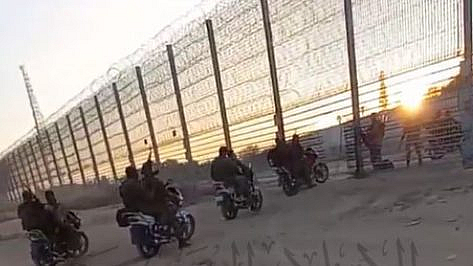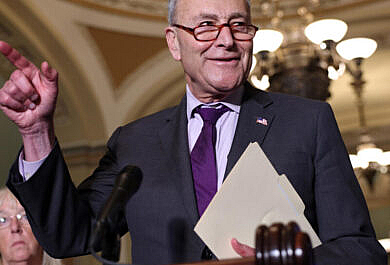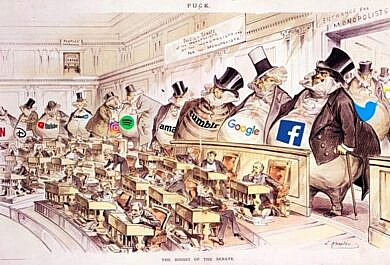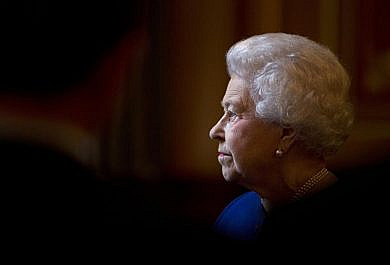A new report from a pro-Israel watchdog group is raising ethical questions about whether western media organizations had advanced knowledge of Hamas’ surprise terrorist attack against Israel on Oct. 7.
Summary
A new report from a pro-Israel watchdog group is raising ethical questions about whether western media organizations had advanced knowledge of Hamas’ surprise terrorist attack against Israel on Oct. 7.
- Honest Reporting investigated how some of Hamas’ atrocities were captured by Gaza-based photographers and journalists who worked as freelancers for Reuters and the Associated Press.
- Honest Reporting argues their presence raises questions like: “What were they doing there so early on what would ordinarily have been a quiet Saturday morning? Was it coordinated with Hamas? Did the respectable wire services, which published their photos, approve of their presence inside enemy territory, together with the terrorist infiltrators? Did the photojournalists who freelance for other media, like CNN and The New York Times, notify these outlets?”
- Several reporters affiliated with the Associated Press – Hatem Ali, Ali Mahud, and Yousef Masoud – were at the site of the attacks and extensively photographed the atrocities. Mohammed Fayq Abu Mostafa and Yasser Qudi, two Reuters photographers, were also conveniently present to document the massacre.
- One freelancer, Hassan Eslaiah, who has worked for AP and CNN, apparently joined with Hamas terrorists during the Oct. 7 surprise attack. Eslaiah posted videos of himself standing in front of a burning Israeli tank and did not have any gear indicating he was a journalist.
- Eslaiah also posted a video of himself riding on a motorcycle with an apparent Hamas terrorist while holding what appears to be a hand grenade. After the reports, a photo emerged of Eslaiah being kissed on the cheek by Yahya Sinwar, the head of Hamas in Gaza.
- CNN severed its relationship with Eslaiah after the report. CNN claimed in a statement that “Hassan Eslaiah, who was a freelance journalist working for us and many other outlets, was not working for the network on October 7th.” The AP also cut ties with Eslaiah, but the New York Times, which has hired Eslaiah in the past, did not comment on his alleged Hamas ties.
- The Israeli government demanded that the four outlets – AP, Reuters, CNN and the New York Times – explain how the photographers were present at the massacre and warned that the news organizations could be complicit in terrorism.
- All four media organizations categorically denied the watchdog report and insisted they had no prior knowledge of the horrific attacks. Hamas terrorists killed more than 1,400 Israelis, mostly civilians, and hold approximately 240 people captive in Gaza.
![]()
- CNN called the report “misleading” in its own writeup of the controversy and accused Netanyahu of giving “credence to the false notion that news organizations were aware of the terror attack prior to it taking place.”
- The Washington Post pointed out that Honest Reporting was not “directly accusing the news organizations, the group made insinuations of complicity.” The Post referenced the AP’s statement where the news organization claims “it did not receive any photographs until well after the attack began.”
- Forward covered the response from Israeli opposition leader Yair Lapid, who demanded more information from the accused news organizations. “The same way the international media is always asking for a response from us — we are now demanding a response from them,” Lapid posted on X. “Who are those journalists? Were they involved in the attack? Did they know in advance? And are you going to fire them?”
![]()
- The New York Post covered the response from Israeli Prime Minister Benjamin Netanyahu. “These journalists were accomplices in crimes against humanity; their actions were contrary to professional ethics,” he posted on X. Benny Gantz, a member of the War Cabinet, said the “journalists who knew about the massacre, who remained silent and took pictures” are “no different from the terrorists.”
- The Commentary Magazine podcast covered the explosive accusations about news media collaboration with Hamas, and explored in-depth how the process of hiring local “stringers” actually works. According to John Podhoretz, media organizations know they’re hiring “bad guys” – that’s the entire point. The practice dates back decades.
- National Review noted “This is not the first time news outlets have been met with controversy over their Gaza-based reporters since the October 7 terror attack. Last month, the New York Times quietly rehired a Hitler-sympathizing journalist from Gaza after he was fired last year for his antisemitic views.”
© Dominic Moore, 2023






